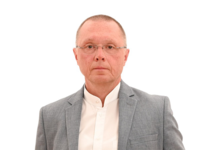Lightweight, corrosion-resistant, and yet stable - these special properties make aluminum a versatile and popular material. Be it in the battery compartment of electric vehicles, in kitchen fittings, in windows and facades, or in food packaging, the sought-after lightweight metal is now indispensable in our modern day-to-day lives. Global need for the material is therefore high. More than 67 million tons were manufactured in 2021 alone and demand is continually increasing. However, this also brings with it a disadvantage: the manufacture of aluminum is extremely energy-intensive. Not only are there high energy requirements during the smelting process, which are predominantly covered by coal-fired power plants, but CO2 emissions are also increasing. Carbon is burned during the production process itself and is expelled as carbon dioxide. This generates roughly 100 million tons of CO2 equivalents per year worldwide.
German aluminum manufacturer TRIMET has now set itself the goal of drastically reducing these process-related emissions. But how can this be done?
The manufacture of aluminum takes place in an electrolytic smelting process known as the Hall-Héroult process. Aluminum oxide is reduced to aluminum metal using carbon electrodes during electrolysis. During electrolysis, the carbon electrode is burned and expelled as CO2. Together with Icelandic technology enterprise Arctus, TRIMET has developed an innovative process in which the carbon electrode is replaced by inert cathode material in the electrolytic cell. The major advantage here is that no carbon electrode is used, so oxygen is released instead of CO2 . For the first time, it is possible to manufacture the lightweight metal without directly producing CO2 emissions and to make a major contribution towards more sustainable production.
The aim of our research project is to make this technological innovation usable at a commercial level, from the laboratory scale and small industrial cells through to mass production. Saarland University and experts from Plansee are involved in addition to experts from TRIMET and Arctus. Known for our innovative solutions for new, challenging material applications, it is our mission to develop the ideal material to replace carbon electrodes.
The material titanium-diboride (TiB2) is ideal for this, which is characterized by extreme hardness and excellent oxidation resistance. In contrast to many other materials, it also does not react with aluminum. Plansee has been producing TiB2 sputtering targets for the hard coating of tools for many years at the Lechbruck plant. This material now needs to be adapted for a new application. In particular, this involves optimization of the corrosion properties in connection with the aluminum electrolyte as well as the oxidation resistance in the upper area of the electrodes, which is exposed to high temperatures in the air. Plansee is also developing a technique for joining TiB2 cathodes to the electrical copper connections for the power supply based on existing know-how.









